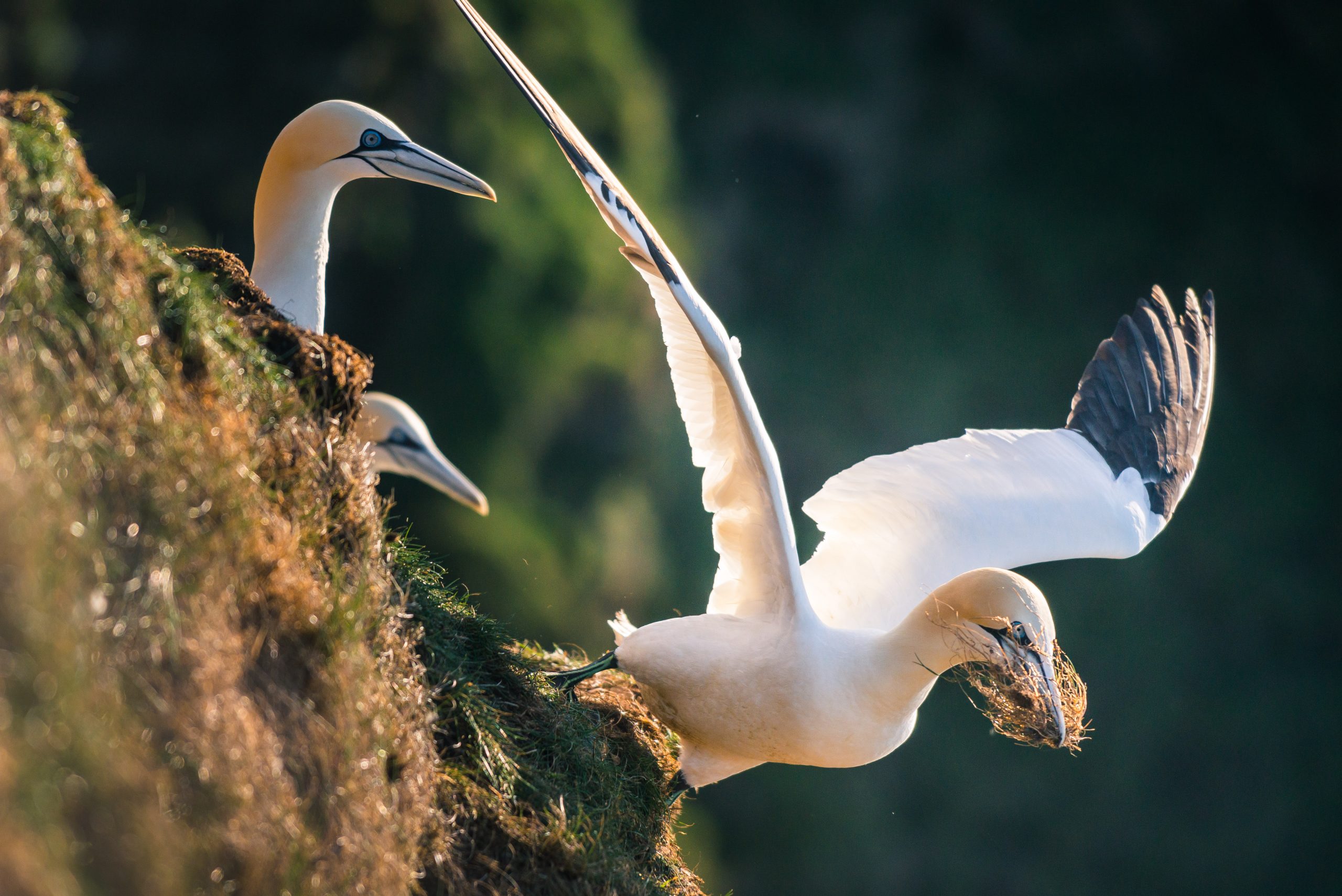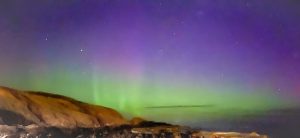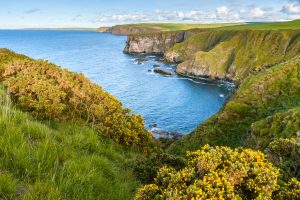In the BBC’s Wild Isles series, Sir David Attenborough highlights the stunning wildlife that exists on our own doorstep. The series features amazing footage, much of it shot on location in Scotland. Follow in David Attenborough's footsteps by Bird Watching in North-East Scotland. Extraordinary. Dramatic. Beautiful
With its rugged coastline, meandering burns and wildflower meadows, it's no surprise that Aberdeenshire is home to a diverse array of wildlife - RSPB Troup Head is not to be missed!
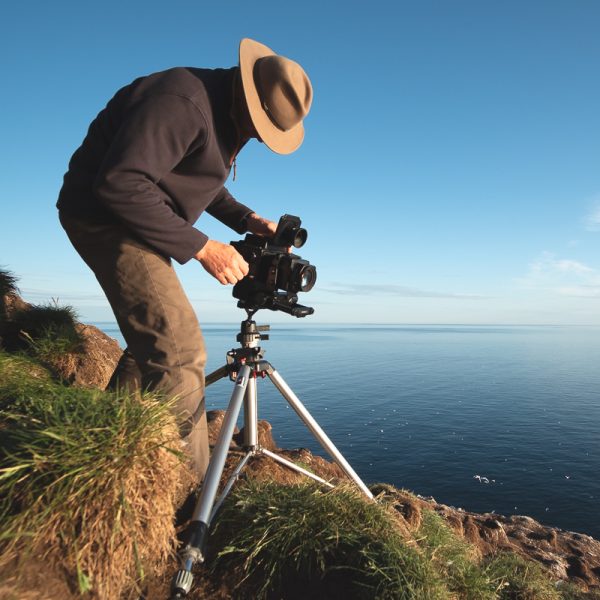
Phil Meadows setting up to photograph the colony at Troup Head
In spring, tens of thousands of seabirds return to the cliffs. Alongside the majestic gannets, thousands of kittiwakes, guillemots and razorbills, along with several other species, including puffins breed here. Gannets are on the UK Birds of Conservation Concern Amber List, meaning that the northern gannet conservation status is of moderate concern.
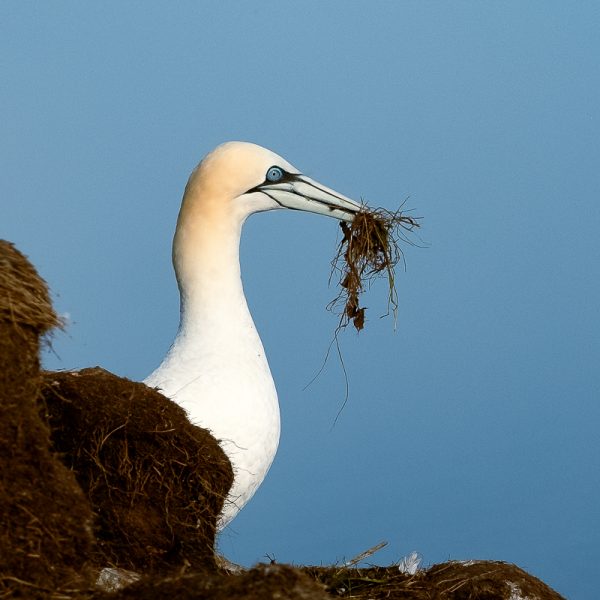
Gannet with nesting material
The gannets start to arrive at Troup Head in late January and leave again from late August to early October. If you visit during April and May, you are likely to see the gannets flying by with nesting materials such as seaweed, grass and feathers. If you look carefully, you may also spot eggs under the fee of the nesting gannets.

In the early part of spring, wildflowers begin to bloom. Spring Squill which produces distinctive and beautiful blue flowers is one of the first to show itself. Found along the clifftop grasslands at Troup Head, it is commonly found on the North and West coast of Scotland. Later in the spring the cliff-top becomes blanketed with the pink and white flowers of Thrift and Sea-Campion.
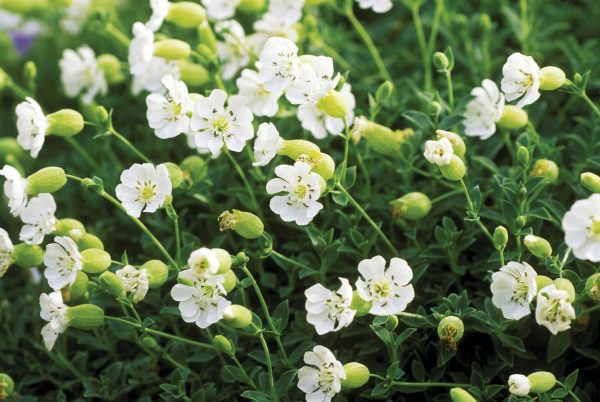
Early Blooms Of The Sea-Campion
Furthermore whilst visiting RSPB Troup Head you may even be lucky enough to see porpoises, minke whales, orcas or bottle-nosed dolphins.
Key facts about Troup Head
- Coastal cliff top reserve 4km in length
- Twenty-nine hectares of cliff face rise to more than 90m and support more than 38,000 seabirds
- The reserve is part of the Special Protection Area (SPA)
- The cliffs are unfenced and dangerous
- Circular walk from the car park is 4km
- A cacophony of raucous squawks, combined with a fishy smell awaits you
- The best time of day to watch and photograph birds is early morning or late evening when the light is softer and there are fewer visitors at the cliffs
- The small 20 car carpark can fill up quickly during gannet viewing season
- Dogs on leads are permitted
So, what are you waiting for, bird watching in North-East Scotland is so worthwhile that one should experience it.
Please take care whilst walking on the unprotected cliff tops as the paths can be muddy and slippery when wet. Please dress appropriately and stay safe whilst bird watching in North-East Scotland.

